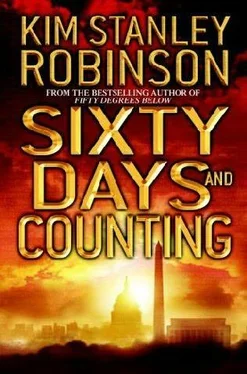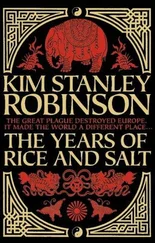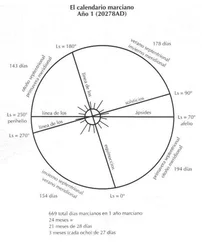Was this true?
In the early environment, female reproductive time lasted about 26 years, from 16 to 42, but this included average of 6 years of pregnancy, and 18 years of lactation. Thus females were pregnant or nursing for 24 of the relevant 26 years, or 92 percent of reproductive life. So, between first average birth age (17) and last conception age (39), average woman was nonpregnant and nonlactating for two years; thus 26 ovulations total. Say three days of fecundity per cycle, thus females were capable of conceiving on only 78 of 8,030 days, or one percent of the time. Thus only about one in a hundred random copulations could potentially result in conception.
Did this make sense? It seemed to Frank that several parts of an algorithm had been crunched into one calculation, distorting all findings. Numbers for numbers’ sake: specifics following an averaging was one sign, “random copulations” another, because there were no such things; but that was the only way they could get the figure to be as low as one percent.
In any case, following the argument, a nubile woman before first pregnancy was more fecund than a fully fecund woman in her early twenties, if one were considering her lifetime potential. And so nubility cues were fertility cues, as males considered their whole futures as fathers. (But did they?) Thus natural selection assigned maximum sexual attractiveness to nubility cues. And this attraction to nubility rather than fecundity indicated monogamous tendencies; male wants long-term cohabitation, with its certainty about parentage for as many offspring as possible.
And what were nubility cues? Skin texture, muscle tone, stretch marks, breast shape, facial configuration, and waist-to-hip ratio. All these indexed female age and parity. Female sexual attractiveness varied inversely with WHR, which was lowest at nubility; higher when both younger and older. Etc. Even the face was a reliable physical indicator. (Frank laughed.) Selection showed a preference for average features. This was asserted because students in a test were asked to choose a preferred composite; the “beautiful composite,” as created by both male and female subjects, had a shorter bottom half of the face than average, typical of a twelve-year-old girl; full lips in vertical dimension, but smaller mouth than true average. Higher cheekbones than true average, larger eyes relative to face size; thinner jaw; shorter distances between nose and mouth, and between mouth and chin. High cheekbones and relatively short lower face and gracile jaw indicated youth, low testosterone/estrogen ratio, and nullipara. Bilateral symmetry was preferred. Deviation in hard tissue reduced sexual attractiveness more than the same amount of deviation in say nose form, which could have resulted from minor mishap indicating little about design quality. Ah, Francesca Taolini’s beautiful crooked nose, explained at last!
As was “masticatory efficiency.” This was the one that had gotten Frank and Anna laughing so hard, that day when Frank had first run across the study. Sexy chewing.
In the early environment, total body fat and health were probably correlated, so fat, what little could be accumulated, was good. Now that was reversed, and thinner meant both younger and healthier. Two possible readings, therefore, EE and modern. Which might explain why all women looked good to Frank, each in her own way. He was adaptable, he was optimodal, he was the paleolithic postmodern!
Were women evaluating men as mates in exactly the same way? Yes; but not exactly. A woman always knew her children were biologically hers. Mate choice thus could focus on different criteria than in effect capturing all of a mate’s fecundity. Here is where the sociobiologist Hrdy had led the way, by examining and theorizing female choice.
Patriarchy could thus be seen as a group attempt by men to be more sure of parentage, by controlling access. Men becoming jailers, men going beyond monogamy to an imprisoning polygamy, as an extension of the original adaptive logic—but an extension that was an obvious reductio ad absurdum, ending in the seraglio. Patriarchy did not eliminate male competition for mates; on the contrary, because of the reductio ad absurdum, male competition became more necessary than ever. And the more force available, the more intense the competition. Thus patriarchy as a solution to the parentage problem led to hatred, war, misogyny, gynophobia, harems, male control of reproductive rights, including anti-abortion laws (those photos of a dozen fat men grinning as they signed a law on a stage) and, ultimately, taken all in all, patriarchy led directly to the general very nonadaptive insanity that they lived in now.
Was that true? Did sociobiology show how and why they had gone crazy as a species? Could they, using that knowledge, work backwards to sanity? Had there ever been sanity? Could they create sanity for the first time, by understanding all the insanities that had come before? By looking at adaptation and its accidental by-products, and its peacock exaggerations past the point of true function?
And could Frank figure out what he should do about his own mating issues? It brought on a kind of nausea to be so undecided.

MOST OF THE KHEMBALISstill in the D.C. area were now moving out to their farm in Maryland. The compound was nearly finished, and although a thin layer of hard snow still lay on most of the ground, spring was springing, and they were beginning to clear the area they wanted to cultivate with crops. They rented a giant rototiller, and a little tractor of their own was on its way. Sucandra was excited. “I always wanted to be a farmer,” he said. “I dreamed about it for years, when we were in prison. Now we are going to try what crops will thrive here.” He gestured: “It looks just like it did in my dream.”
“When the ground thaws,” Frank suggested.
“Spring is coming. It’s almost the equinox.”
“But growing season here starts late, doesn’t it?”
“Not compared to Tibet.”
“Ah.”
Sucandra said, “Will you move out here with us, and build your treehouse?”
“I don’t know. I need to talk it over with Rudra.”
“He says he wants to. Qang wonders if he should stay closer to hospital.”
“Ah. What’s wrong with him, do they know?”
Sucandra shrugged. “Old. Worn out.”
“I suppose.”
“He will not stay much longer in that body.”
Frank was startled. “Has he got something, you know—progressive?”
Sucandra smiled. “Life is progressive.”
“Yes.” But he’s only eighty-one, Frank didn’t say. That might be far beyond the average life span for Tibetans. He felt a kind of tightness in him.
“I don’t know what I’ll do,” he said at last. “I mean, I’ll stay where he is. So—maybe for now I’ll just work on the treehouse, and stay in Arlington with him. If that’s okay.”
“That would be fine, of course. Thank you for thinking of it that way.”
Disturbed, Frank went up the hill to the copse of trees at the high point.
He walked around in the grove, trying to concentrate. They were beautiful trees, big, old, intertwined into a canopy shading the hilltop. Snow filled every crevice of the bark on their north sides. If only they lived as long as trees. He went back to his van and got his climbing and window-washing gear, and trudged back up the hill. It was sunny but cold, a stiff west wind blowing. He knew that up in the branches it would be colder still. He wasn’t really in the mood to climb a tree, and you needed to be in the mood. It was more dangerous than most rock climbing.
Читать дальше
Конец ознакомительного отрывка
Купить книгу













